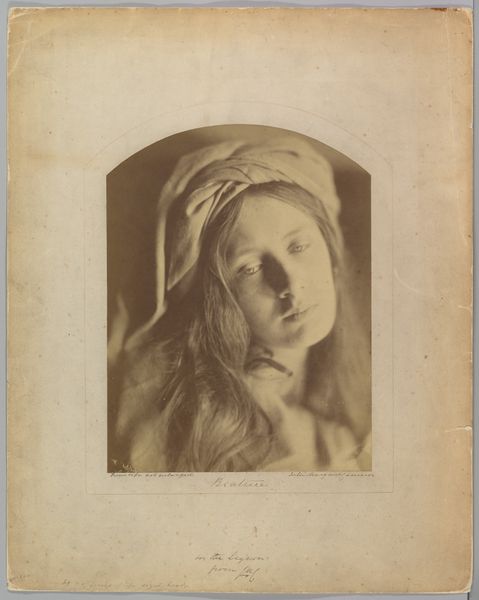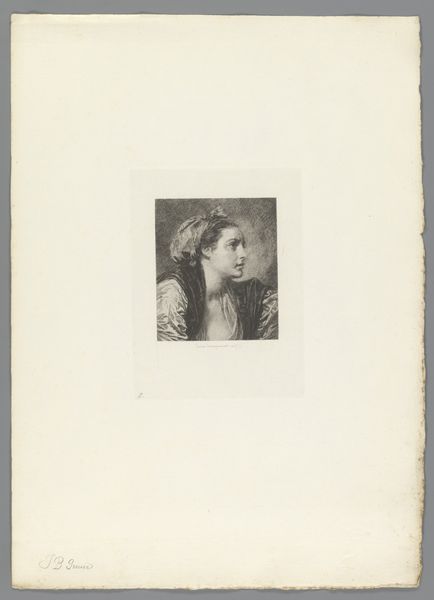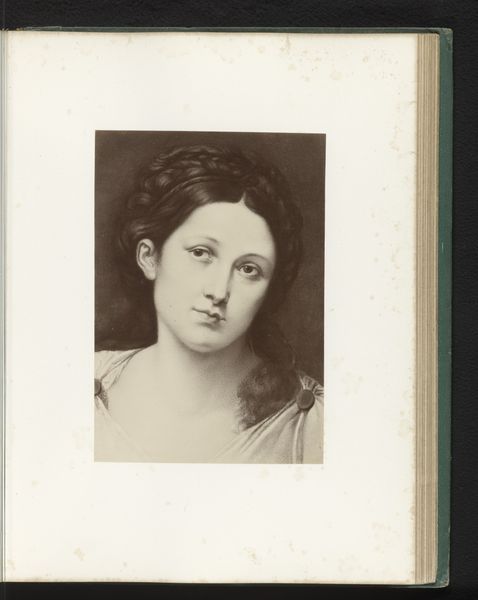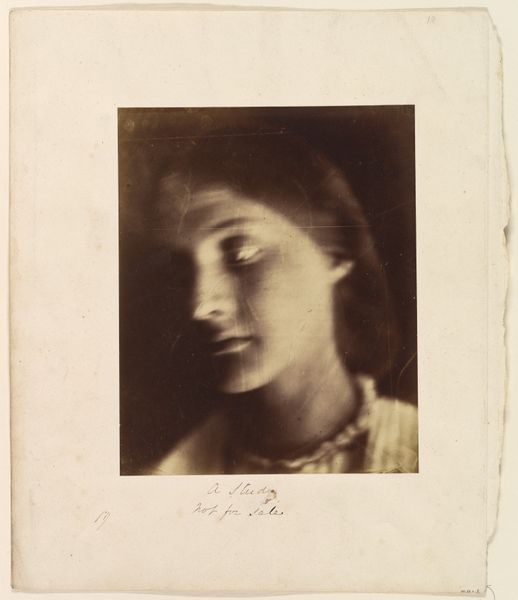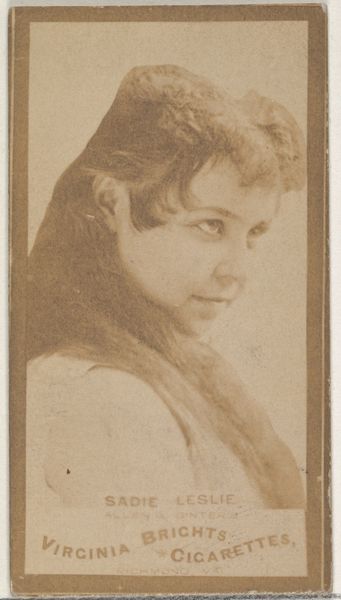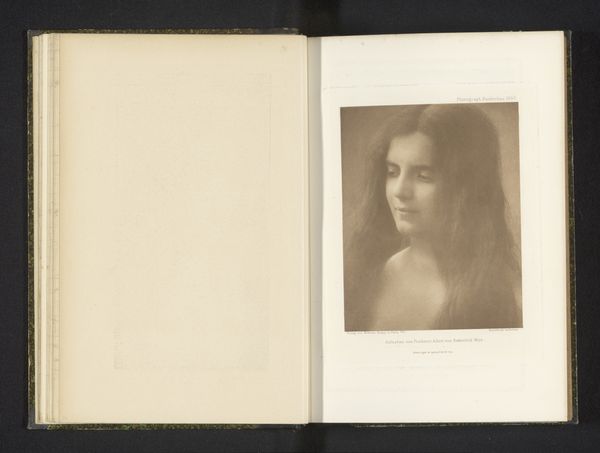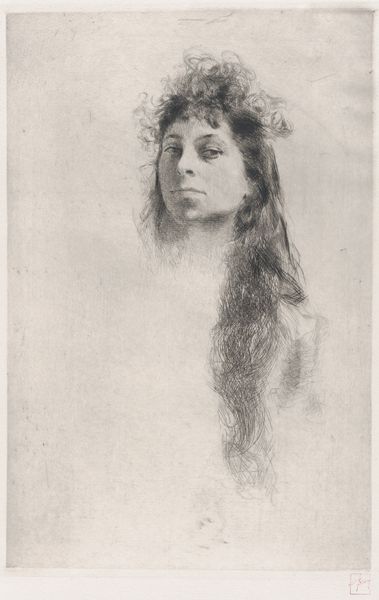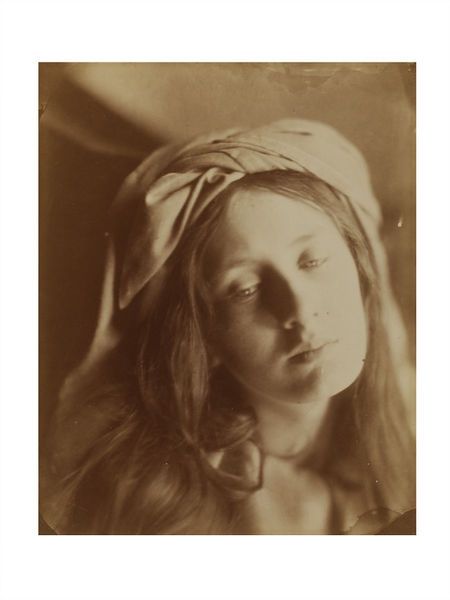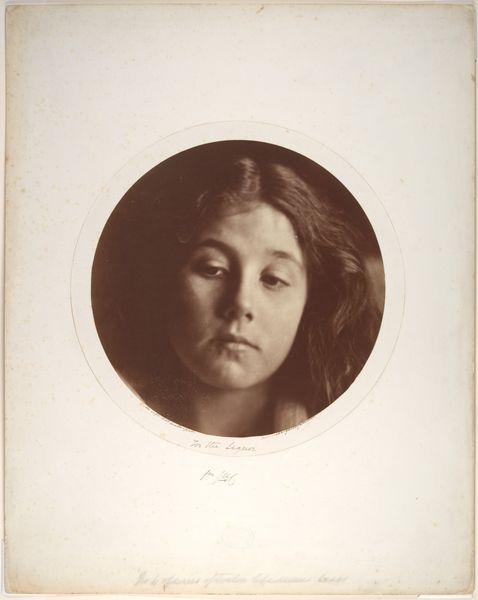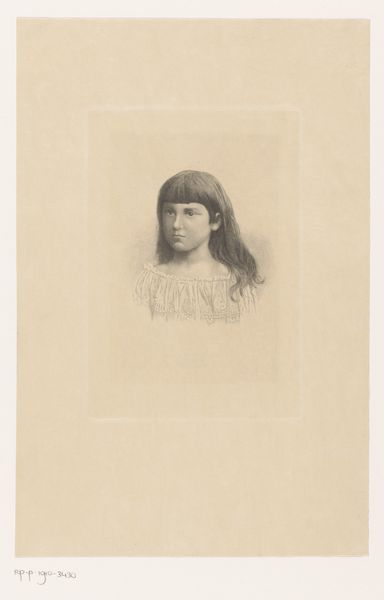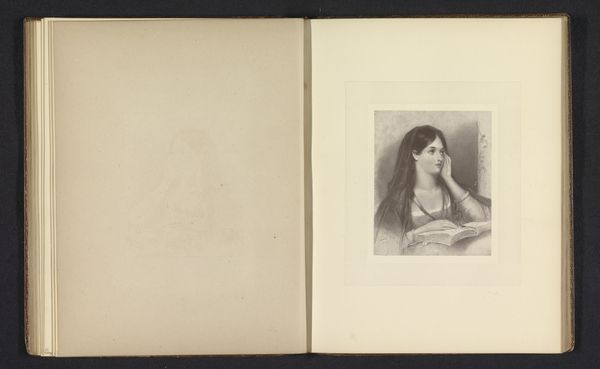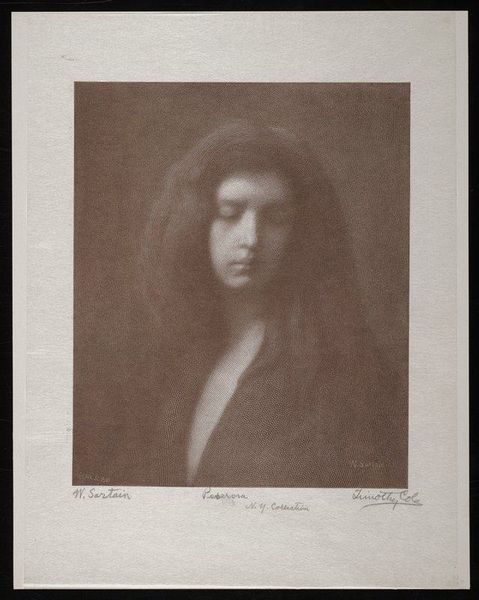
photography
#
portrait
#
pictorialism
#
photography
#
19th century
Dimensions: height 151 mm, width 114 mm
Copyright: Rijks Museum: Open Domain
Curator: The subject is a young woman gazing directly at us, a wide-brimmed hat shadowing her features just so, bathed in a soft, dreamy light. The feeling is...evanescent, almost like a memory fading at the edges. Editor: This is an early 20th-century photograph titled "Portret van een onbekende jonge vrouw," created by Philipp von Schoeller before 1902. What strikes me immediately is the quality of the light and focus, almost blurring. It situates the image squarely within the pictorialist movement, when photographers aimed to make their work more artistic, painterly, like fine art, questioning what photography could become in society and where photography fit in the spectrum of representation. Curator: Ah, "painterly" is spot on! See how the edges aren't sharp, how the textures of her hair and the hat melt into the background. It feels less like a factual record and more like an Impressionist painting. I think it suggests a wish to go beyond just recording a likeness, don't you? But capturing, somehow, a soul. Editor: Exactly. Photography, at this point, was still grappling with its role. Was it purely documentation or could it convey something more? Pictorialists sought to elevate it, imbuing images with mood and emotion through manipulation of light, soft focus, and even hand-applied techniques during printing. Think about the democratization of art itself: cameras for the bourgeois and artwork representing and for a wider group of people. Curator: It makes me wonder about this unknown woman. The way Schoeller uses light almost venerates her; and with all the focus blurring to make her beautiful but to conceal parts of who she is. I suppose the title suggests a desire to make the invisible visible. Editor: The "unknown woman," and the lack of information, perhaps, became a deliberate focal point within pictorialism: ordinary folk instead of royal leaders. But the way that it elevates everyday subjects tells its own historical narrative too; a time when photography attempted to create images infused with both mystery and universal human appeal. Curator: It seems we're always trying to catch ghosts with these technologies. A little melancholy. Editor: Indeed. This single image opens a fascinating door into the artistic and social debates of its time.
Comments
No comments
Be the first to comment and join the conversation on the ultimate creative platform.
